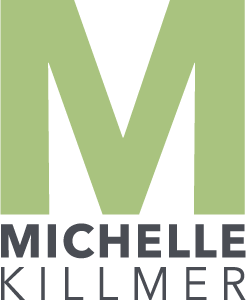Who remembers how University of Pennsylvania’s Museum of Archaeology and Anthropology didn’t have a cohesive signage/wayfinding system? Anyone? Just me?
It’s funny how things come full circle. When I was a junior at UArts, we were split into groups for a mandatory week-long workshop with an industry professional who volunteered to come in and show us what they do. I was in the group that worked under Virginia Gehshan of Cloud Gehshan, an EGD design firm seated right in Old City, Philadelphia.
At the time of this workshop (2010?), conception and possibly even design finalization was going on at Cloud Gehshan for new wayfinding going up at UPenn’s famed museum. Since that was the hot topic at the firm, Virginia thought that’s what we could do, also. So, she scheduled for us to take a field trip to the museum (sort of, we had to all pile in cabs or ride the subway to get to our destination—all of which we had to figure out on our own) and reconvened in the courtyard before splitting up once more. Our group opted (by majority consensus…or maybe Virginia voted for it) for cab ($8 one way per person, about 21 blocks), although I very much voted for subway (roughly $2 for one way, I think, at the time). I thought the subway would be quicker (and cheaper), we’d just have to buy tokens.
I remember my group: Marty, Leandra, John (who literally showed up once) and I think Sophie. Marty was our group leader and instructed us to take as many photos as possible. We went around and took photographs of signage (shown above, pin letters on the brick wall of the museum’s perimeter) of all types whether or not it belonged to the museum (yup, SEPTA bus route signs, too), decorations, wall patterns, murals, vinyls, floor tiles, etc. You name it, we photographed it. The idea was to get as many different ideas of any motifs or schemes we could find. The problem was, there was no correlation between the exterior and interior wayfinding and signage.
When we were done, we headed back to our studio in Terra, the building we called home as GD students, and had a group discussion about what we saw at the museum as well as what our task would be for the rest of the week. We worked for a few hours before Virginia called time and we disbanded for the day.
The next day, we congregated into the studio, segregated in our assigned groups, and worked quietly. John, the member of our group who didn’t attend the first day of the workshop, showed up so I began going over with him what we were doing to get him up to speed.
Virginia thought I was being disruptive, so she looked over and told me to stop talking, that it’s not a social hour. I looked at her, slightly embarrassed as everyone stared at me, and said, “Virginia, this is John.” She goes, “Who is John? I don’t know who he is.” She’s clearly still annoyed. I responded with, “He’s in our group and was absent yesterday. I’m catching him up.” She felt bad, I could tell, and said, “Oh, okay.” She later apologized for calling me out when I wasn’t really doing anything wrong. I told her it was fine, and we moved on.
Despite that hiccup in our work time, our group spent the day sketching and discussing colors (sheet shown below provided by Virginia!), common shapes, potential schemes and how we were going to use everything.
After that day, John never came back. We knew this would happen, so when we divvied up the work, we gave him something non-critical, despite his promise to show up daily. We pushed through without him over the next three days, and our visions came to life.
By the end of the week, we had a full package ready to present. As instructed, we pinned up our process book showcasing our thought process throughout this workshop alongside the other groups.
It was interesting to see what everyone did, especially when color palettes and other ideas were similar but used and executed very differently.
Each group got to present their signage and wayfinding package, and at the end, we all clapped and celebrated with pizza. It was the last time I saw Virginia, but not the last time I worked with Cloud Gehshan.
Three years later, I was hired by Urban Sign and worked there for five years. One of the first projects I got to see go out the door was none other than the signage designed by Cloud Gehshan for the University of Pennsylvania Museum of Archaeology and Anthropology.
So really, my experience with EGD begins when I was still in college. I never thought that’s where I’d end up, but alas, I spent the last six years immersed in signage, murals, wayfinding, ADA, interactive displays, etc. It’s an incredible field, and I’ve learned so much being in it.
Below are some of the things we finalized as part of our wayfinding package for the museum:



